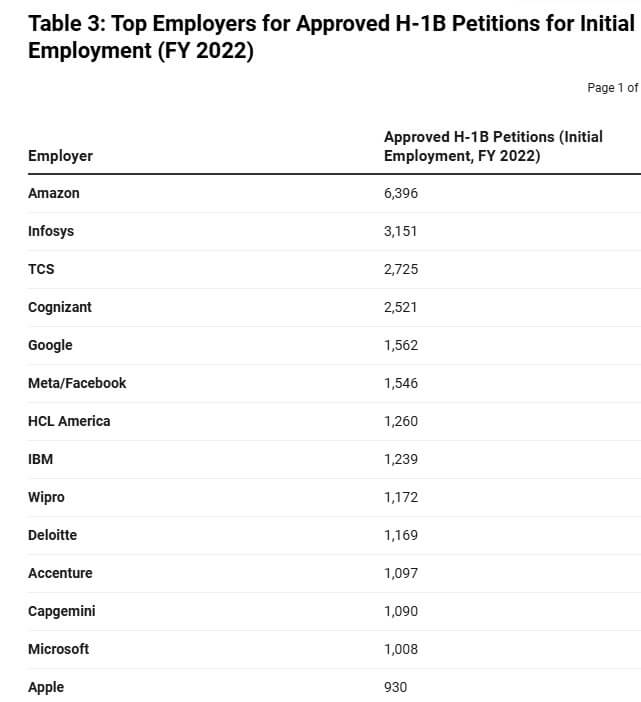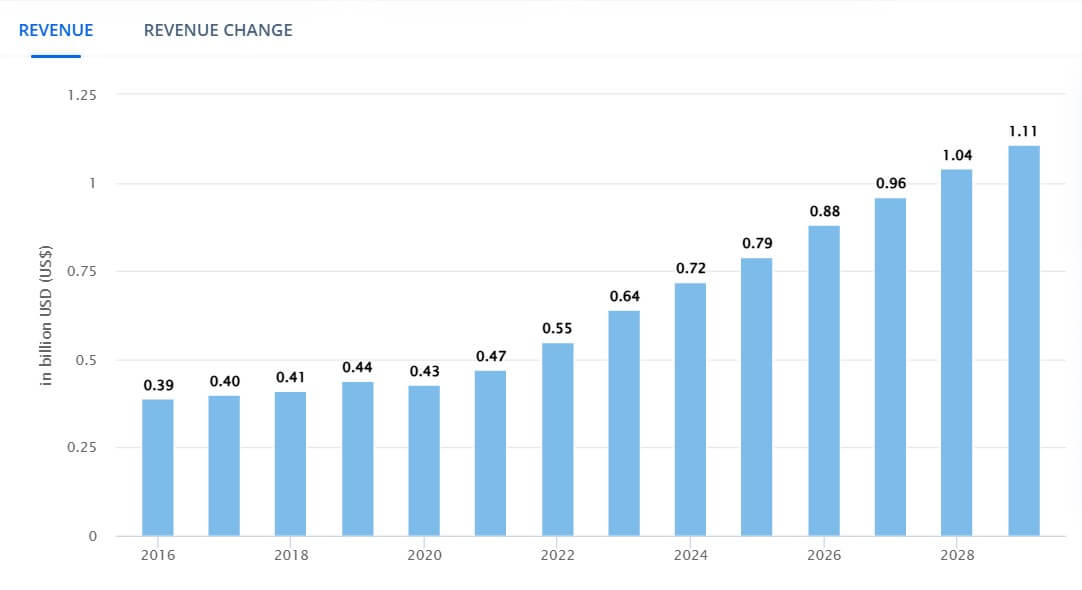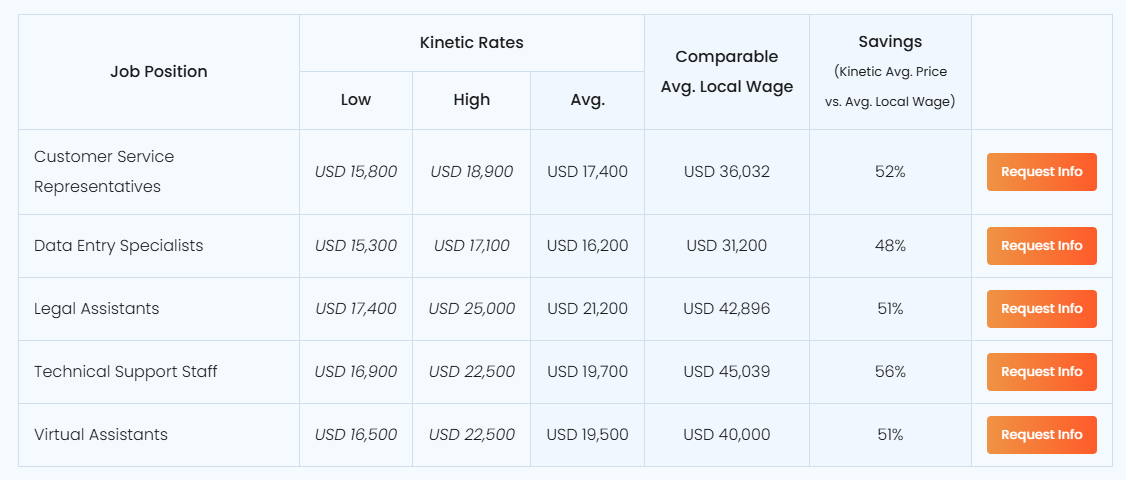Offshore staffing helps U.S. businesses overcome H-1B visa delays by giving them direct access to global talent—without the bottlenecks of visa quotas, paperwork, or long approval timelines. In 2024, more than 780,000 H-1B registrations were filed for just 85,000 slots, leaving thousands of companies unable to secure the workers they need. Instead of waiting months (or years) to onboard critical skills, companies can quickly build remote teams in talent-rich regions like the Philippines, where skilled professionals are readily available. This not only reduces hiring friction but also lowers costs and accelerates growth.
Stuck in the H-1B visa maze? Your business deserves better. Offshore staffing offers a smarter way forward.
I. The H-1B Visa Problem: Why U.S. Companies are Struggling

The H-1B visa process was designed to provide U.S. companies with access to specialized talent from around the globe. However, over the years, this once-reliable solution has become a bottleneck for businesses in need of skilled professionals.
H-1B Quotas: A Numbers Game
Each fiscal year, the U.S. Citizenship and Immigration Services (USCIS) issues a strict cap of 65,000 visas, with an additional 20,000 set aside for those holding advanced degrees from U.S. institutions. While these numbers might have been sufficient decades ago, they pale in comparison to today’s demand.
For FY 2025, nearly 480,000 registrations were submitted—still far exceeding the available slots —more than 12 times the available slots. This staggering imbalance means that nearly 80% of applicants will face rejection, not due to a lack of qualifications but because of sheer volume. As one frustrated HR manager put it, “It’s like playing the lottery with your company’s future.”
The odds are especially daunting for small and mid-sized companies that must compete against tech giants like Amazon, Google, and Meta, which routinely secure a significant portion of the visas. Even geographically, states like California and Texas dominate approvals, leaving smaller businesses across the Midwest and Southeast scrambling for talent. For companies already battling tight labor markets, the system feels stacked against them.

The Financial Cost of Delays
The financial burden of the H-1B process is another significant hurdle. It is a labyrinth of fees, legal costs, and administrative efforts. The base filing fee for an H-1B petition ranges from $460 to $2,805, but this barely scratches the surface. Add in premium processing fees, legal counsel, and compliance expenses, and the cost per application can easily exceed $10,000.
For businesses, the stakes are high. Take the example of a mid-sized biotech company awaiting approval for a highly specialized lab technician. “We were ready to launch a groundbreaking research project, but a six-month delay forced us to put everything on hold,” the CEO shared. “That single delay cost us over $50,000 in lost funding opportunities.”
Delays also ripple through other operational areas. Missed product launches, stalled R&D efforts, and extended timelines for IT rollouts all translate to lower productivity and lost revenue.
Ripple Effects on Productivity
The talent shortages caused by H-1B limitations hit companies where it hurts most: their ability to function efficiently. Imagine a healthcare organization unable to hire enough foreign-trained nurses during a nationwide staffing shortage, or a startup forced to scale back its innovative projects due to a lack of software engineers.
These gaps lead to stretched teams, overworked employees, and subpar outcomes. “We had to shelve a major client project because we simply didn’t have the people to deliver it,” a startup founder lamented. “Our existing team worked overtime, but we couldn’t sustain the quality our clients expect.”
The issue is widespread. In a 2021 Gartner Survey, 64% of IT executives believe that the shortage of talent is one of their most important challenges. With each unfilled position, companies lose not just money but also momentum.
Even temporary solutions, such as hiring less-qualified staff, come with their own set of problems, often compromising quality and further straining already-stressed teams. For industries like technology, where the race to innovate is relentless, these productivity losses can mean falling behind competitors.
The current system, riddled with delays, restrictions, and inequities, leaves U.S. businesses grappling with mounting costs and dwindling talent pools. If companies are to thrive in an increasingly competitive global market, a more effective solution is urgently needed.
II. The Offshore Staffing Solution: A Cost-Effective Way to Overcome Visa Challenges
U.S. businesses are turning to offshore staffing as a practical and efficient alternative to hiring skilled professionals from countries like the Philippines—where the talent pool is abundant and cost-effective.
Offshore staffing is the practice of hiring professionals from overseas locations to perform tasks remotely. The Philippines has become a global hub for this model, thanks to its highly skilled workforce, strong English proficiency, and competitive labor costs.
Proof of the migration to outsourcing is the increasing BPO (Business Process Outsourcing) revenues for powerhouse countries like the Philippines.
According to Statista, the Philippine BPO industry generated approximately $38 billion in exports in 2024, with projections for continued growth and will continue to grow as more U.S. businesses take advantage of its offerings. (Seventy percent of business comes from North America.)

Benefits of Offshore Staffing Over H-1B
- No Visa Hassles:
Offshore staffing eliminates the need for navigating the complex and time-consuming H-1B visa process. Instead of waiting months—or even years—to onboard skilled professionals, businesses can hire offshore workers almost immediately. - Cost Savings:
Hiring offshore talent, particularly in the Philippines, can significantly reduce expenses. Professionals in the region often cost 70% less than their U.S. counterparts.

- Flexible Hiring:
Offshore staffing allows companies to scale their workforce up or down based on project needs. Whether it’s a short-term project requiring niche skills or a long-term engagement for core operations, offshore staffing offers unmatched flexibility. - 24/7 Operations:
By leveraging time zone differences, businesses can operate around the clock. For example, a U.S. company with an offshore team can ensure tasks are completed overnight, improving turnaround times and enhancing customer service availability. - Access to Top Talent:
The globe is home to highly educated workforces with expertise in various industries, including technology, healthcare, finance, and customer service. There are a number of English-speaking nations as well, making communication seamless for international business collaborations.
Offshore staffing offers a compelling alternative to the challenges of the H-1B visa process. By sidestepping visa delays, reducing costs, and accessing a global talent pool, companies can maintain productivity and competitiveness in an increasingly complex hiring landscape.
In the next sections, we will look more closely at the virtues of outsourcing and how it is the smarter way to build world-class teams.

III. How Offshore Outsourcing Works
Offshore outsourcing works by allowing U.S. companies to hire skilled professionals abroad who work remotely but remain fully integrated into the business through digital tools and workflows. Instead of relying on the restrictive H-1B visa process, businesses can quickly access global talent pools and build high-performance teams—without borders slowing them down.
The Digital Ecosystem That Makes It Possible
Advancements in technology have made remote collaboration seamless. With high-speed internet, cloud-based platforms, and secure communication tools, employees no longer need to be physically present in your office to be productive.
For example, a U.S. company hiring a software developer offshore can:
- Assign tasks through project management tools like Asana or Trello.
- Receive regular updates via Slack or Microsoft Teams.
- Review code through GitHub or shared repositories.
- Collaborate in real time with Zoom screen-sharing or video calls.
From their home office—whether in the Philippines, India, or another global hub—offshore professionals can contribute just as effectively as local hires.
Key Benefits of Offshore Outsourcing
Offshore outsourcing provides several advantages that directly address the challenges of traditional hiring models:
- No Visa Delays – Companies avoid the long wait times and uncertainty of the H-1B process.
- Lower Overhead Costs – No need for office space, utilities, or expensive local benefits.
- Faster Hiring Cycles – Onboard skilled professionals within weeks, not months.
- Scalable Teams – Easily add or reduce team members as business needs change.
- Global Talent Access – Tap into specialized skills that may be scarce locally.
Seamless Integration Into Company Culture
Even for highly collaborative roles, offshore professionals can remain fully engaged with in-house teams:
- Video meetings replicate face-to-face interaction.
- Shared documents allow real-time contributions.
- Workflow tools ensure accountability and transparency.
As a result, remote employees don’t just complete tasks—they drive growth, innovation, and long-term success alongside U.S.-based teams.
IV. Overcoming Talent Gaps: How Companies Can Build High-Performance Offshore Workforces

By leveraging offshore teams, businesses can build a high-performing, sustainable workforce for the future.
How can offshore staffing help fill talent gaps quickly?
When hiring is stalled by visa approvals or a lack of local talent, offshore staffing gives businesses immediate access to the global workforce. This ensures projects stay on schedule and productivity remains uninterrupted.
Case in point:
- A U.S.-based software company facing H-1B delays outsourced developers to the Philippines. The result? They met project deadlines, cut development costs by 40%, and maintained their market edge.
- A leading New York fintech firm hired Filipino engineers to fill gaps. Their offshore team delivered app updates two months early while reducing development costs by 35%.
Can companies test offshore talent before committing long term?
Yes. Offshore staffing allows businesses to test skills, performance, and cultural fit before committing to full-time hires. This trial approach reduces risk and ensures long-term success.
Example:
A U.S. marketing agency engaged offshore staff for a 3-month trial. By the end, the top performers transitioned into full-time roles, seamlessly integrating into the company’s culture and strategy.
Do offshore employees stay longer than local hires?
Offshore employees—especially in the Philippines—often show strong job satisfaction thanks to competitive salaries, career growth, and supportive work environments. This leads to higher retention and lower turnover costs for employers.
Example:
A U.S. healthcare company struggling with high admin turnover built a team of offshore virtual assistants. With clear growth paths and supportive culture, retention hit 90% over three years, saving $150,000 annually in recruitment and training costs.
Do offshore teams perform as well as local staff?
Yes. Offshore teams consistently deliver quality, efficiency, and adaptability—often matching or outperforming local staff at significantly lower cost.
Example:
A mid-sized e-commerce company outsourced customer support to the Philippines. Within one quarter, offshore agents achieved a 95% satisfaction rating (up from 85%) while slashing support costs by 50%. The savings were reinvested into marketing, driving a 30% sales increase.
V. Making H-1B Visa Problems Obsolete
Let’s look closer at how offshore staffing sidesteps some of the most pressing problems in the U.S. labor market.
Problem 1: Visa Delays Disrupting Business Operations
The Challenge:
Lengthy H-1B visa processing times and high denial rates often stall critical projects and disrupt operational goals. For industries reliant on specialized skills, these delays can have significant financial and reputational consequences.
The Solution:
With offshore staffing, it literally takes one email or one phone call to begin the hiring process. Offshore staffing eliminates the need to navigate complex visa processes. Businesses take back control of how quickly deploy workers, instead of waiting for approvals from a government agency.
Problem 2: High Staffing Costs in the U.S.
The Challenge:
Hiring locally can strain budgets, particularly for small and medium-sized businesses. Competitive salaries, benefits, and overhead costs required by highly qualified candidates also make it difficult for employers to achieve profitability.
The Solution:
Offshore staffing provides access to skilled professionals at significantly reduced costs. Countries like the Philippines offer a vast pool of talent, often at 70% lower salaries than equivalent U.S. positions.
Problem 3: Talent Shortages in Key Areas
The Challenge:
American demand for highly skilled professionals in fields like IT, engineering, and customer support often outpaces supply—leaving critical roles unfilled, affecting national productivity and competitiveness.
The Solution:
Forbes reports that 70% of U.S. companies struggle to fill various jobs and positions.
Offshore staffing connects businesses with a global workforce of highly trained professionals, known not only for their strong English proficiency but also expertise in diverse cutting-edge industries. These world-class professionals can bridge the U.S. talent gap efficiently.
With solutions tailored to address visa delays, high costs, and talent shortages, offshore staffing empowers businesses to tackle obstacles head-on. By securing the talent they need, companies can improve operational efficiency, and achieve long-term success.
VI. Why Offshore Staffing Is the Smart Long-Term Investment for Your Company

While outsourcing often begins as a stop-gap solution, many companies find it to be the ultimately a superior, long-term strategy—not just for addressing their workforce needs, but as a competitive strategy.
What companies have found in outsourcing is a fundamental change not only in talent acquisition but also in the nature of the competition.
The rules have changed once offshore staffing has entered the picture, and once businesses have experienced its benefits, they often don’t see the necessity for traditional, visa-dependent hiring—especially with outsourcing providers in the Philippines offering flexible, high-quality alternatives.
Why Companies Don’t Go Back to H-1B Visas After Outsourcing
- Cost Efficiency That Scales with Growth
Offshore staffing is practically unbeatable when it comes to cost efficiency. This is true for all stages of employment. Visa-related expenses—including legal fees, relocation costs, and sponsorship obligations—can easily run into tens of thousands of dollars per employee.Outsourcing saves companies thousands month after month because it offers the same highly-skilled talent at a fraction of the cost.These savings can be reinvested in the company, into factors like research, product development, expansion, etc., making it that much more competitive. - Access to a Diverse Talent Pool
Although both H-1B and outsourcing seek to tap talent from other countries, the global talent pool available through outsourcing is often larger, more specialized, and easier to acquire.There are often many artificial and bureaucratic restrictions in the H-1B route that have very little to do with an employee’s ability to perform the job. This needlessly restricts the talent available to the detriment of U.S. businesses.Also, the experts in a field, those who have logged in serious years of valuable experience, already have families and dependents they don’t wish to leave. So they disqualify themselves and pass on the offer—choosing to stay with their families.The flexible and remote nature of offshore staffing entices more qualified candidates, ensuring businesses can find the exact skill set they need. - Elimination of Uncertainty
The H-1B visa process is fraught with unpredictability, from annual caps to fluctuating approval rates. Outsourcing eliminates this uncertainty, virtually guaranteeing the ideal hire—providing companies with stable, long-term access to qualified professionals without delays or legal hurdles. - 24/7 Productivity and Global Collaboration
The fact that workers are situated remotely, often on the other side of the globe, has proved to be a benefit. Outsourcing enables businesses to operate across time zones, ensuring round-the-clock productivity without paying for nighttime differentials. This advantage is particularly valuable for customer service, IT support, and other functions that require 24-hour operations. - Greater Flexibility in Workforce Management
What is true for one employee is true for all. Outsourcing provides companies with the flexibility to scale their teams up or down based on project demands or growth goals.
In contrast, the H-1B visa process locks businesses into lengthy commitments, limiting their ability to adapt quickly to rapidly changing market conditions.
As we’ve explored, the H-1B visa process is riddled with delays, high costs, and unpredictability. These challenges disrupt business operations and hinder growth. Fortunately, Philippine outsourcing companies provide a powerful and cost-effective solution.
By outsourcing, you’ll ensure your business stays competitive and future-proof, with the right talent ready to build affordable, high-performance teams.
Frequently Asked Questions
What are the main problems with H-1B visas?
The biggest challenges with H-1B visas are strict quotas (only 85,000 slots annually), long processing times, high rejection rates, and significant legal costs. These delays can leave U.S. companies waiting months—or even years—to hire the talent they need.
How much can companies save with offshore staffing?
Businesses typically save 40–70% in labor costs by hiring offshore teams. Beyond salaries, savings also come from reduced overhead (office space, benefits, insurance) and faster hiring cycles.
What roles can be outsourced offshore?
Companies commonly offshore IT support, software development, data entry, finance and accounting, customer service, digital marketing, and even specialized roles like engineering or medical billing.
How does offshore staffing compare to hiring through H-1B visas?
Unlike H-1B hiring, offshore staffing doesn’t depend on visa approvals or annual caps. It allows companies to build teams faster, scale on demand, and access a much broader pool of global professionals.
Is offshore staffing a long-term solution or just a temporary fix?
Offshore staffing is increasingly seen as a long-term workforce strategy. Many U.S. companies build dedicated offshore teams that integrate seamlessly with in-house staff, ensuring continuity, scalability, and sustainable growth.
6. How do companies ensure quality and compliance when offshoring?
Reputable offshore staffing providers handle compliance with labor laws, data security, and HR policies. They also implement quality assurance measures such as rigorous candidate screening, skills testing, and ongoing performance monitoring.
Book a free consultation with Kinetic Innovative Staffing to explore how outsourcing can contribute to your success.
Kinetic Innovative Staffing has been supporting businesses across Asia Pacific, North America, the Middle East, and Europe with highly skilled remote professionals from the Philippines since 2013. Contact us today to discover how we can support your team.





